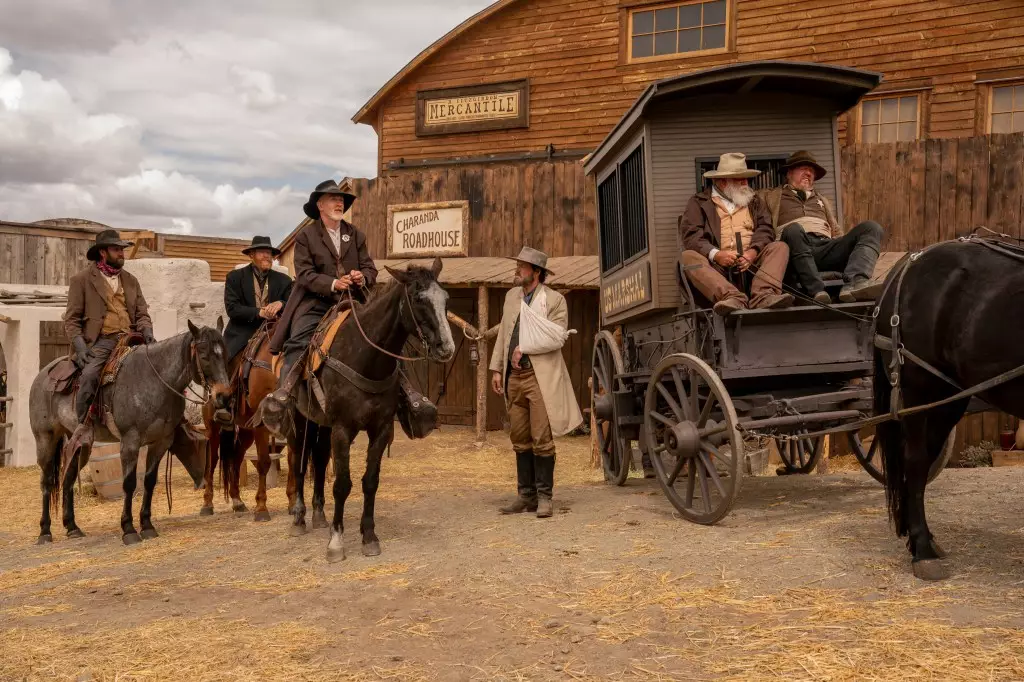The release of “Rust,” an indie Western burdened by a tragic incident, has sparked a myriad of conversations that extend far beyond the movie itself. This film, now showing in 115 theaters under the banner of Falling Forward Films, comes at a time when the industry is still grappling with the fallout from the accidental shooting death of cinematographer Halyna Hutchins by a prop gun handled by Alec Baldwin. The tragedy is not merely a backstory; it looms large over the film’s release, overshadowing any accolades or artistic expressions it may convey. While the film’s cinematography—by Hutchins and later, Bianca Cline—has garnered praise, the emotional weight of the incident creates a setting where celebration feels morally complicated.
Indie films are often a breeding ground for artistic freedom; however, “Rust” questions whether that freedom can exist in the shadow of such a catastrophic event. Filmgoers might find it difficult to separate the art from its tainted circumstances, raising an uncomfortable question: can one truly enjoy a work that exists so heavily tied to human loss? The heartbreak is felt more profoundly when one considers that funds from the movie’s earnings are intended to assist Hutchins’ young son. This altruistic initiative feels noble, yet it also creates a sense of moral obligation among viewers, complicating the act of watching the film itself.
Cultural and Legal Ramifications
The legal ramifications surrounding the shooting continue to reverberate within Hollywood, igniting debates about accountability and safety in film production. As multiple civil suits remain unsettled, the question of whether art should continue to be showcased when its creation was laced with such disregard for human life becomes increasingly pointed. The involuntary manslaughter conviction of Hannah Gutierrez-Reed, the production’s armorer, underscores systemic failures that prioritize profit over safety. It becomes difficult to ignore that the life of a talented cinematographer was sacrificed on the altar of indie filmmaking.
Despite the trials and tribulations surrounding “Rust,” it’s essential to consider how this incident reflects broader issues within the film industry. Laws and protocols are often circumvented, with financial incentives overshadowing essential safety measures. The tragic events surrounding “Rust” could serve as a wake-up call, prompting filmmakers and studios to reevaluate their commitments to safety and ethical considerations. The perspective from a center-right viewpoint would advocate for stricter regulations within the industry, emphasizing the need for accountability without stifling creative innovation.
The Contradictions of the Indie Scene
At its core, the indie film sector prides itself on storytelling that challenges norms and brings forth raw, unfiltered narratives. Yet, “Rust” poses a disturbing contradiction. The film’s creators tout a heartfelt message honoring Hutchins’ work, which undoubtedly is a catalyst for its release. However, this self-expressed intention is complicated by the unavoidable knowledge that this film is linked to a tragedy. The very act of honoring a fallen talent feels contradicted by the fact that her passing arose from negligence and a blatant disregard for safety protocols.
The involvement of Falling Forward Films’ CEO Scott Kennedy paints a somewhat rosy picture, casting the release as a labor of love, driven by compassion for Hutchins’ family. This account presents a commendable aim yet raises ethical questions about profit accrued from tragedy. As viewers, we must confront an unsettling reality: how are we complicit in the commodification of loss? This moral gray area presents an uncomfortable intersection between art and ethics that is challenging for film lovers to navigate.
Restoring Faith in Indie Filmmaking
While “Rust” embodies the painful repercussions of tragic events, it can also serve as a much-needed impetus for reform within the film industry. This kind of change does not solely rely on stricter regulations; it necessitates cultural upheaval in how filmmakers view production as a collaborative and safe environment. The burdens and tribulations faced by films like “Rust” expose fissures that could either fracture the indie scene or become fertile ground for a renaissance of ethical filmmaking.
Could it be that this tragedy ultimately champions a vital shift, fostering a renewed understanding of artistic responsibility? Perhaps this will reignite engagement with safety standards that have long been neglected, offering a sense of redemption that may arise from this somber saga. The industry’s future depends on how we choose to move forward, and every release will echo the messages we allow to resonate within the realm of choreography and direction related to human life on set.

